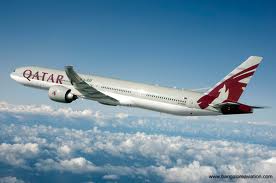So, you want to fly a plane? It’s not as difficult as you think, but it does require some effort – and an education. Your skills as a pilot are largely determined by the instruction you receive, but not all flight schools are created equal. What you need is the best possible school given the money you have available. Thankfully, there are many scholarships, grants, and other funding options out there for you to choose from so affording a good school shouldn’t be a problem. What might be a problem is finding one.
Choosing The Type of School That’s Best For You
There are basically three different ways to become a pilot. You can attend a Part 61 school, a Part 141 school, or you can sign up to an accredited school such as the Phoenix East Aviation Flight School. Part 61 schools require the longest flight time before you can get your license, but they aren’t heavily monitored by the FAA. Part 141 has stricter guidelines, is regularly audited by the FAA, but requires fewer minimum flight hours.
For personal licensing, it’s not such a big deal. However, if you want to become a commercial pilot, the difference is huge – 250 hours for a Part 61 school vs 190 flight hours for a Part 141. That means a substantial difference in your tuition, plane rentals, and instructor costs.
Accredited schools meet the rigid standards the U.S. Department of Education. It’s just like attending a university – you get a degree and everything. Commercial airlines look favorably on this kind of thing.
Overall, accredited schools and Part 141 schools are the types of schools you may want to shoot for if you want to be a commercial pilot.
Basic Admission Requirements
You can’t just walk into a school and expect to be accepted. In the U.S., there are some basic requirements you must meet. First, you must be at least 17 for your private license and 18 for a commercial one. You must also be able to speak, read, and write English fluently. Finally, be prepared to learn advanced mathematics, physics, and flight-specific application of meteorology. For commercial licenses, you must also upgrade your medical certificate to a “class 2” cert.
The Costs
Most schools have a few costs associated with them. You pay for your tuition, the flight school itself (i.e. the instructor’s time), rental of an aircraft, and then ground school instruction. Combined, these costs can run you a minimum of several thousand dollars just for a private license, but this is only assuming the minimum flight time requirements. For commercial licenses, expect to pay anywhere between $30,000 and $50,000 or more.
How To Pay For School
If you want to be a flight instructor, there are a few federal programs out there to help you. For example, there’s the “Women in Aviation” scholarship for women, a scholarship from the University Aviation Association, The National Business Aviation Association, and the Organization of Black Aerospace Professionals. There’s also the Pell Grant and of course subsidized federal loans.
Paul Guerrier is a trainee commercial pilot. His articles mainly appear in aviation blogs where he enjoys sharing his knowledge.

